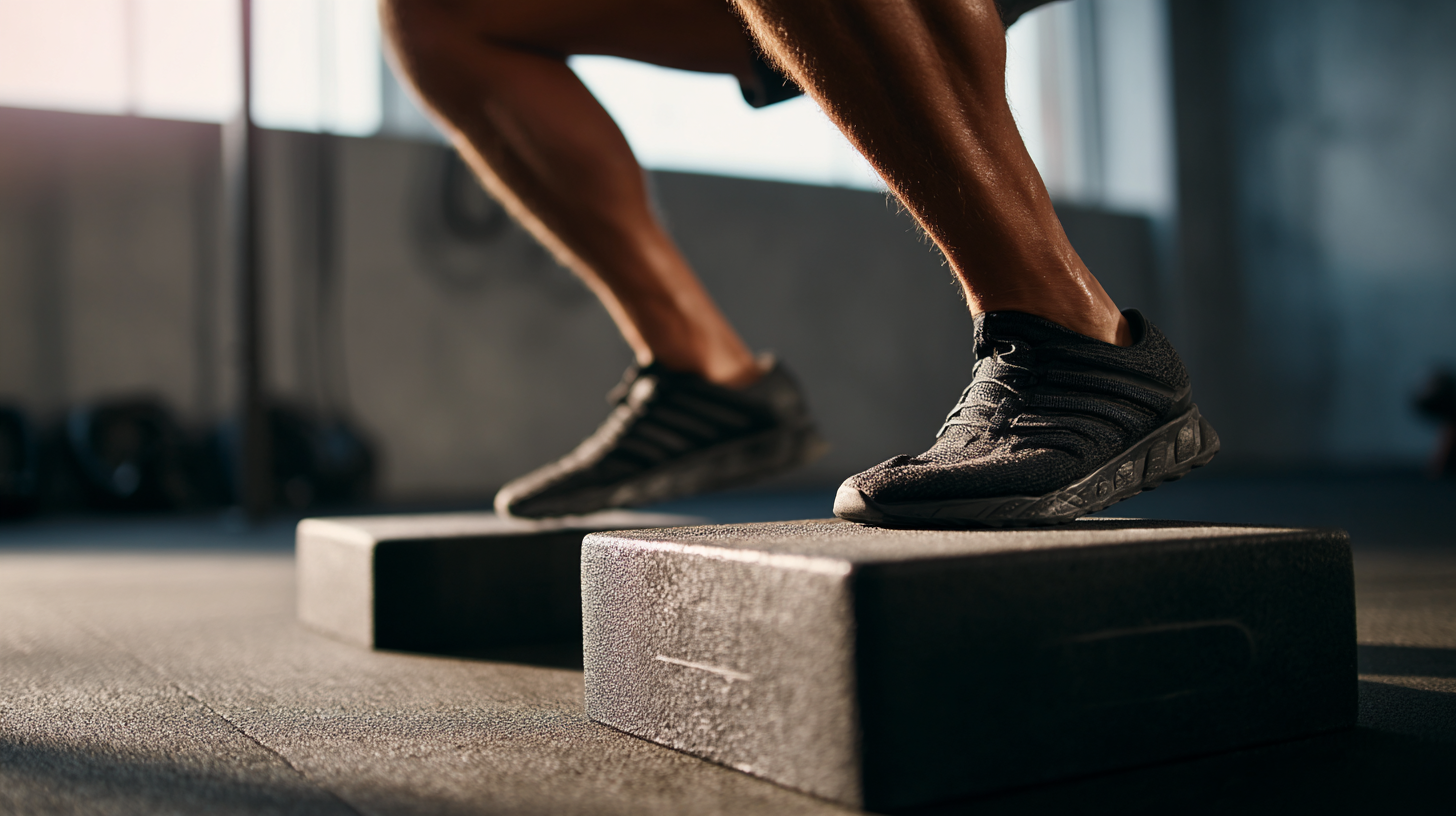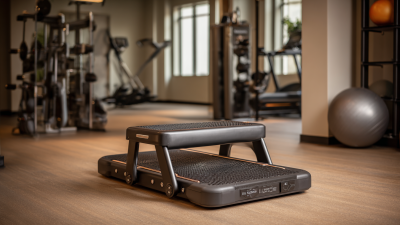Understanding the Impact of Exercise Step Height on Your Fitness Journey
Exercise is a cornerstone of maintaining physical health and improving overall fitness, yet many individuals overlook the significant role that
Exercise Step Height plays in their workout routines. According to a recent report by the American Council on Exercise, varying the step height during workouts can influence
cardiovascular benefits, muscle engagement, and calorie expenditure. For instance, a study published in the
Journal of Sports Science found that participants using higher step platforms burned up to 30% more calories compared to those using lower heights. This enlightening information emphasizes the importance of incorporating Exercise Step Height adjustments to enhance workouts effectively. As fitness enthusiasts seek to optimize their training regimes, understanding how to manipulate step height can lead to greater results, improved strength, and more enjoyable exercise experiences.

The Science Behind Step Height: Why It Matters for Your Workout
The height of your exercise step can significantly influence your workout efficacy and safety. Studies show that different step heights engage various muscle groups, which can help you target specific areas for a more balanced fitness journey. Higher steps typically work the quadriceps and calves more intensively, while lower steps might allow for better stability and focus on technique. Understanding this can help you tailor your workouts to meet your fitness goals effectively.
Tips: Experiment with different step heights to find what challenges you while maintaining proper form. Start with a lower height and gradually increase it as your strength improves. Additionally, consider alternating step heights during your workouts to keep your routine varied and engaging, preventing plateaus in your progress.
The science behind step height also connects to cardiovascular efficiency. A higher step can elevate your heart rate more than a lower step due to increased exertion. This means stepping up your game could lead to better endurance and calorie burn. Be mindful of your limits, and ensure that any changes to your step height are complemented by proper warm-ups and strength conditioning to avoid injuries.
Choosing the Right Step Height: A Guide for All Fitness Levels
Choosing the right step height is crucial for maximizing the effectiveness of your workout, regardless of your fitness level. For beginners, starting with a lower step height is recommended to build confidence and ensure proper form during exercises such as step-ups or box jumps. A step height of 4 to 6 inches allows newcomers to focus on mastering movements without the risk of injury. As they gain strength and coordination, they can gradually increase the height for more challenging workouts.
For those with an intermediate to advanced fitness level, incorporating higher step heights—ranging from 8 to 12 inches—can enhance cardiovascular endurance and muscle engagement significantly. Higher step heights allow for more explosive movements, promoting strength in the legs and core. However, it is essential to maintain proper technique to prevent strains. Individuals should listen to their bodies and adjust the height accordingly, ensuring that each workout remains safe and effective for their fitness journey.
How Step Height Influences Calorie Burn During Exercise
The height of the step during aerobic exercises plays a significant role in determining the overall calorie burn. When you perform workouts such as step aerobics, the elevation you choose can directly affect the intensity of the session. Higher step heights typically engage more muscle groups and elevate the heart rate, leading to increased energy expenditure. This is primarily because stepping onto a higher platform requires more effort, activating larger muscles such as the glutes and quadriceps.
Additionally, the range of motion involved with higher steps can enhance cardiovascular benefits, promoting greater oxygen consumption. As your body works harder to lift itself up and down, it not only burns more calories but also boosts overall fitness performance. Conversely, lower step heights may be beneficial for beginners or those recovering from injury, providing a more manageable workout while still eliciting caloric burn. Selecting the right step height is therefore crucial to tailoring an effective fitness routine that aligns with your goals, making strategic adjustments as your fitness level progresses.
Understanding the Impact of Exercise Step Height on Your Fitness Journey
This chart illustrates the relationship between exercise step height and calorie burn. As the step height increases, the calories burned per 30 minutes of exercise also rises, showcasing the effectiveness of higher step heights in enhancing your fitness journey.
Tips for Modifying Step Height for Injury Prevention and Performance
When incorporating step exercises into your fitness regimen, understanding the impact of step height is crucial for optimizing performance and preventing injuries. Research indicates that using a step height that is too high can increase the risk of strain on the knees and ankles; a study published in the Journal of Sports Science found that increasing step height by just 2 inches can lead to a 25% increase in joint stress. Therefore, selecting an appropriate step height is essential for both safety and effectiveness in your workouts.

To ensure that your step exercise routine minimizes injury risk, consider the following tips. Firstly, start with a lower step height, especially if you are new to step exercises or returning after an injury. A height of 4-6 inches is often recommended for beginners, gradually progressing to 8-10 inches as strength and confidence increase. Secondly, focus on form over height; proper alignment and technique can significantly reduce the risk of injury. Lastly, listen to your body – if you experience discomfort or pain, don’t hesitate to modify the step height or consult a fitness professional.
By carefully selecting the right step height and implementing these strategies, you can enhance your fitness journey while safeguarding your body against potential injuries.
Maximizing Your Results: Combining Step Heights with Other Exercises
The relationship between step height and exercise effectiveness is crucial for optimizing fitness outcomes. Studies indicate that varying step heights can significantly influence cardiovascular responses and muscle engagement. For instance, a report from the American Council on Exercise (ACE) suggests that using a step height of 12 inches can increase caloric expenditure by approximately 20% compared to a 6-inch step. This finding underscores the importance of incorporating higher step heights into your workouts to enhance calorie burn and improve overall cardiovascular fitness.
Moreover, combining step exercises with other forms of training can lead to superior results. Incorporating strength training movements, such as lunges or squats, while performing step-ups allows for increased muscle activation and functional strength. According to the National Academy of Sports Medicine (NASM), integrating resistance elements can elevate heart rate and metabolic response, leading to greater muscle endurance and fat loss. Utilizing a comprehensive approach that blends various step heights with diverse exercises not only keeps workouts engaging but also maximizes training efficiency and effectiveness, pushing you closer to your fitness goals.

Related Posts
-

Ultimate Guide to Choosing the Perfect Mini Pedal Exerciser for Your Home Gym
-

7 Ways Adjustable Step Enhances Your Fitness Journey
-

2023's Top 5 Benefits of Using the Best Aerobic Stepper Platforms for Global Fitness Markets
-

How to Choose the Best Adjustable Step for Your Home Fitness Routine
-

Unveiling the Best Aerobic Adjustable Stepper A Comprehensive Comparison for Global Buyers
-

How to Choose the Best Adjustable Aerobic Step Platform for Your Home Workouts
